10 Hilarious “Dog Beards” You Need to See
Is your face feeling scruffy and a little “ruff”? It might be because there’s a dog on it! Well, that’s the case with some people, who have taken growing a beard to a new level.
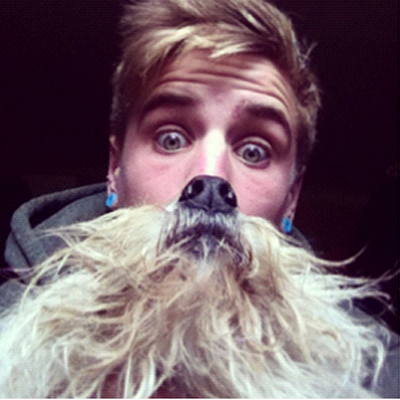
Enter dog bearding, a response to the popular “cat beard” photo meme that involves taking a photo of yourself with your dog. But this isn’t your regular run-of-the-mill “selfie”: the dog-bearding trend involves using the dog’s nose and chin to lend the appearance of having a beard. The result is a hilarious mashup of human and dog that is guaranteed to make you giggle.
Although cats and their humans were first to make the bearding trend famous a couple of years ago, the photo fad is still alive and well on the Internet. If you search Instagram with the hashtags #dogbeard and #dogbearding, you’ll find close to 8,000 photos of people sporting sweet dog beards. Every breed from Miniature Schnauzers toPomeranians are getting in on the bearded selfie action!
We’ve chosen our top favorite dog-bearding Instagram photos for your dog-beard viewing pleasure. Which one tickles your fancy?
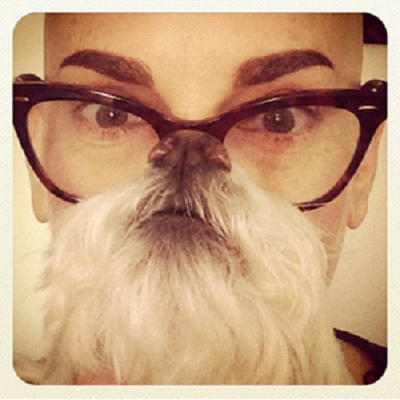
govegandotnet/Instagram

prystupa/Instagram
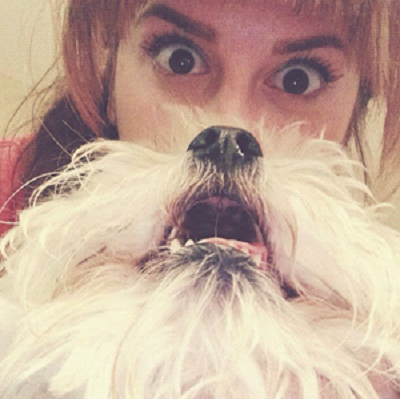
kaltastic/Instagram
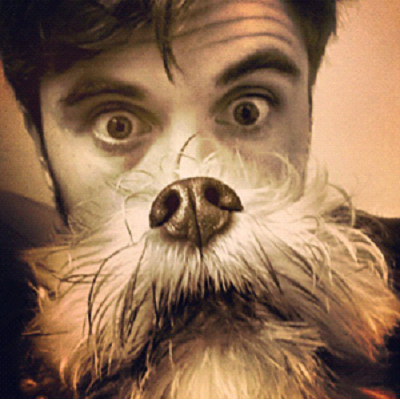
tom19/Instagram

ellenbelle86/Instagram
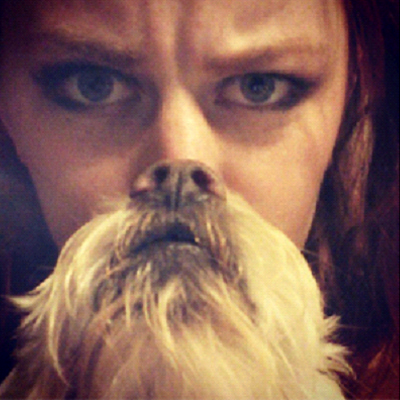
heeethuurrr/Instagram
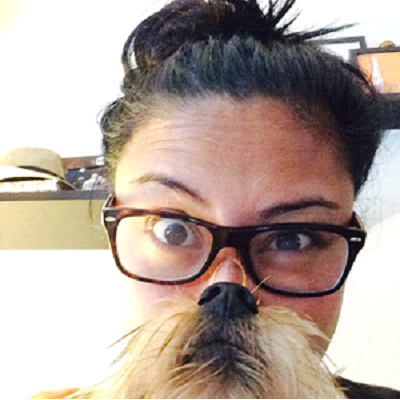
instaprill/Instagram

kristen_5_g/Instagram

meganell/Instagram
10 Best Dog Beaches in the U.S.A

Here’s a rundown of 10 of the best dog beaches our American pooches enjoy.
The West Coast
1. Huntington Dog Beach, Huntington Beach, Calif.
Nestled along the picturesque Pacific Coast Highway in Orange County, just south of Los Angeles, all manner of canines romp in the waves and shake sand on their owners at Huntington Dog Beach. This is an official dog beach, with its own service board that maintains the beach and refills the poop bag dispensers. Hillsides and the terrain surrounding the beach create a natural barrier between dogs and traffic, creating a perfect spot for friendly pooches to chase balls and sometimes ride the waves on surfboards. This is Surf City, after all.
Andrea Servadio, co-founder of Fitdog Sports Club in Santa Monica, Calif., takes her 4-year-old Jack Russell Terrier, Brecken, to the Huntington Dog Beach year-round.
“Brecken gets excited even before we get there,” Servadio says. “He immediately darts towards the water and has a huge smile on his face the whole time.”
2. Coronado Dog Beach, Coronado, Calif.
“All dogs go to heaven, but before they go, they should visit Coronado Dog Beach,” says Will Kearney, a pet adventure blogger from Chicago, and owner of a seaside-loving 2-year-old Rhodesian Ridgeback named Mr. Eko. “The beach is gorgeous, and the only thing friendlier than the people are the dogs.”
Coronado Dog Beach is another San Diego treasure, located on the north end of Coronado Beach, which in 2012 was ranked by Dr. Beach as the best beach in the United States. Wet dogs and soggy tennis balls fly past beachgoers, and your furry beach bum can even take a surfing lesson from the Coronado Surfing Academy.
The long walk toward the water can get hot on bare feet in the summer, but the stretch acts as a safety barrier between dogs and cars, and at the end of the day, there’s a foot and dog washing station where the sand meets the parking lot.
“There’s great camaraderie between the dogs,” says Ashley Torresala of San Diego, owner of Zia, a 4-year-oldFinnish Spitz who loves the water. “For some reason, they’re all in the mindset of sharing toys and including others in their play in a way I don’t typically see in a dog park setting.”
If dogs roam outside of the dog beach boundary, owners are subject to a $500 fine, though Kearney says police are more likely to hand out belly rubs than tickets.
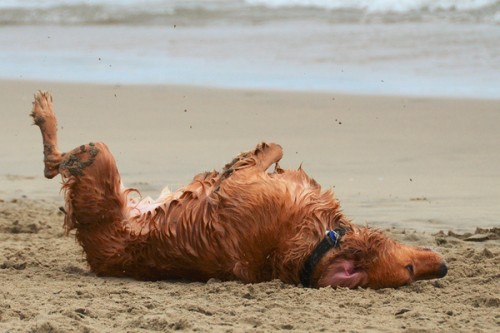
The Midwest
3. Montrose Dog Beach, Chicago
The Midwest is not known for its beaches, but it is known for its lakes and its love of dogs. Combine the two and you get Montrose Dog Beach on Lake Michigan in Uptown Chicago, a haven for landlocked dogs and their owners. A fence separates dogs from the traffic except toward the south end of the beach, but it is large enough so that owners can stay clear of that spot until dogs are on leash. Be careful, however, and be sure your dog responds reliably to recall commands. Otherwise, you might find yourself chasing your dog down busy Lake Shore Drive.
This beach draws a lot of bigger dogs, so small dog owners may want to take caution. It is crowded in the summer, and diehards claim that the best time to visit is in the winter, when there are fewer people and the dogs seem to be better behaved.
All dogs using the beach are required to have a “Dog Friendly Area” tag purchased from a veterinarian for $5, showing that a dog is healthy and up to date on vaccinations.
The South
4. The Dog Beach of Hollywood, Hollywood, Fla.
Tropical doggie heaven spans the space between two orange safety cones on the pristine white beach in Hollywood, Fla., just north of Miami, where dogs splash in the warm turquoise water of the Atlantic Ocean. Sand dunes act as a natural barrier between the dogs and the parking lot as hounds sniff the shore and terriers dig holes in the sand. The beach is wide, with no commercial activity nearby. The regulars are friendly, and there’s always shade under the palm trees.
Bridgette King, a resident of Hollywood and regular at The Dog Beach of Hollywood, says that her 3-year-old Poodle, Dolce, isn’t a swimmer, but loves to dig.
“When we pull up to the parking lot, her tail starts wagging like crazy,” King says. “She’s sometimes a little hard to catch when it’s time to go home.”
5. Jupiter Beach, Jupiter, Fla.
Two-and-a-half miles of pawprints dot the sand in Jupiter, Fla., from north of the Juno Beach lifeguard area to south of Carlin Park’s lifeguard area. Because of the beach’s beauty, 30 of Jupiter Beach’s residents didn’t want to keep it all to themselves, so in 1994 they privately funded poop bag stations and installed some common-sense rules so that the beach would stay tidy and fun for both dogs and owners. Today the organization is 5,100 dog lovers strong, keeping the beach clean and safe for everyone.Dogs laze under the sea grape trees and doggie paddle in the crystal blue water, as owners watch them from beach chairs under colorful umbrellas.
“This is the best dog beach in the U.S. because we have an endless summer, the people are chill and friendly, and the dogs are well-behaved and cheerful,” says Julie Rodrigues, resident of Jupiter and owner of Bristol, a 4-year-old exuberant Pointer-mix. “There is no worry of altercations between the pups, and if there are any, they are easily resolved. You just walk on and enjoy the sunshine.”
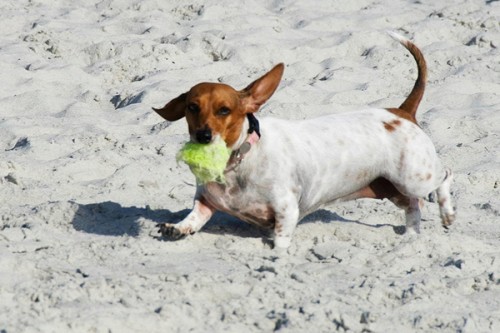
Twelve miles long and over 100 spacious feet wide, this Brunswick Island beach is off-leash playville for salty dogs in the morning hours, though leashed dogs are welcome any time. Out of the hustle and bustle of everyday life, this dog-friendly beach boasts long stretches of sandy dunes that will make Fido believe he has gone back to a simpler time. This south-facing beach features calmer water than other beaches in the area, and since dogs are allowed off leash during the offseason, you might find yourself alone with your pooch during the chillier months, when the beach is all yours!”The first thing I felt when visiting this beach was a feeling of open space and beautiful landscape,” says Rebecca Magee of Waxhaw, N.C., who owns Molly, a 7-year-old Labrador Retriever-Rhodesian Ridgeback mix who loves the shore. “Everyone has their own room to set up, and the dogs are friendly and play together on the sand and in the water.”
The Northeast
7. Wiborg Beach, East Hampton, N.Y.
It’s the privileged canine who paddles the waters of Wiborg Beach in East Hampton, N.Y., the playground of the rich and famous. Manhattanites abandon the concrete canyons on summer weekends for the place where the water meets the shore — with their dogs in tow, of course.
Residents of the bungalows and mansions that dot the beach have free access to it, but visitors must purchase seasonal passes, which are capped at a certain number so that the beach is rarely crowded.
“It’s an afterthought to realize that the conversation you have had with the unnamed person who has admired your dog is Candice Bergen or Martha Stewart,” says Roy Cohen, an author from New York City and East Hampton, and owner of Oskar, a 3-year-old Labrador Retriever-Poodle mix. “Two summers ago, former President Bill Clinton was stopped by a local police officer for walking his dog in-season and off leash after hours.”
Of course, dogs don’t care that the people on the beach are hedge fund titans, Oscar-winning actors, or former presidents — they just care about that tennis ball in your hand.
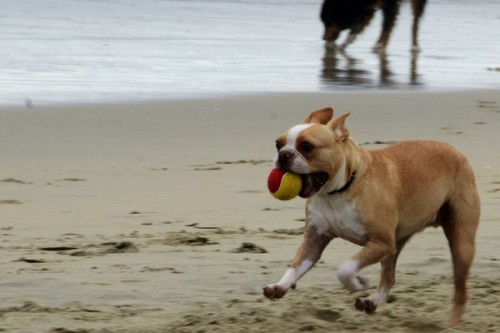
The 3,346-foot long beach with a funny name draws dog lovers to its talcum powder sand from all over the area and as far away as Boston, including former First Lady Barbara Bush and her dogs. Outcroppings of rock and crashing waves make this shoreline unique — as does the 9-foot high tide, which engulfs the beach until it recedes. Summer homes line the clamshell-sprinkled beach, which has plenty of sticks for playing fetch.
“I’m not sure who enjoys it more, the people or the dogs,” says Brooke Sheldon of Kennebunkport, Maine, owner of Bradbury, a 6-month-old Golden Retriever. “Many people know each other by their dogs’ names, not necessarily the person’s.”
The Northwest
9. Howarth Park, Everett, Wash.
This 28-acre park features an off-leash dog beach that’s spacious when the tide is out, so residents watch the tide tables for the perfect time to take Fido for a splash. The sounds of seals and dogs barking over Puget Sound, geese to chase, and friendly dog owners make this pebbly beach a destination. Your dog must have a solid recall due to train tracks nearby.
“There are tons of things to explore, smell, roll on, and climb on,” says Kimberly Gauthier, a blogger forwww.keepthetailwagging.com//ital// from Marysville, Wash., and owner of three water-loving tail-waggers; Rodrigo, a 3-year-old Australian Cattle Dog-Border Collie mix, Sydney, a 3-year-old Australian Cattle Dog-Labrador Retriever mix, and Blue, a 1-year-old Australian Sheperd-Australian Cattle Dog mix. “The morning is a big game of chase on the beach, and they love it.”
10. Yaquina Bay State Recreation Site, Newport, Ore.
Just west of Highway 101 in Newport, Ore., you’ll find a bow-wow beachfront that’s a little too cold for people-paddling, but most dogs aren’t deterred by the chilly temps. Any Oregonian will tell you not to turn your back on the ocean, so keep your eye on the tides and your dog.
“It’s hard to beat this combo of easy access, lots of room, no fees, and beautiful views,” says Rachel Beck, a resident of Eugene, Ore., and owner of Tessa, a 6-year-old Beagle, and Bond, a 7-year-old mixed-breed dog. “Dogs don’t care about swimsuit bodies or umbrella drinks, and neither of those things are on display on the Oregon Coast.”
10 Tips for Planning the Pawfect Day
When you tie the knot you want those nearest and dearest to you by your side – and if one of those happens to be your family dog, there is no reason why they should not share in your big day. But there are several things to consider when it comes to making the day perfect for you and your pet.

Here are ten top tips for making sure your big day, including your much-loved dog, goes without a hitch.
1. Do a reality check. Before you do anything else, ask yourself if your pet can handle being part of your celebration? If your dog is shy and uncomfortable around strangers or in social situations then it would be better to leave him or her at home where you know they are safe and happy. There are other great ways to make your dog’s presence known without him actually attending.
2. Tell all. When you send out your invitations, make people aware of the part your pet will play in the wedding, just in case anyone is allergic to or afraid of dogs. Also, make sure everyone in the wedding party is comfortable with your plans. The last thing you want is the best man or bridesmaid on edge because they are frightened of dogs.
3. Vet your vendors. Check that the individual officiating the wedding is fine with animals and that all the venues you want to book are dog-friendly. Also, alert your photographer, videographer and wedding planner to their presence.
4. Stop and smell the flowers. If you are having flowers, make sure they are not harmful to animals by consulting your florist. Poisonous plants include Baby’s Breath, Tulips, and certain types of lily. Keep an eye out for other toxic or potentially problematic items when you visit venues.
5. Get fur- real. Have a clear but realistic idea of what you want your pet’s role to be. Perhaps your dog will carry the rings or maybe he will walk with the bride down the aisle to the groom. Make sure it is a role you know they would be comfortable doing and practice it so you don’t have any nasty surprises on the day. Take training for any new skills slowly and keep it positive.
6. Take a break. Make sure there is a quiet space where your animal can go if it becomes overwhelmed or stressed. Make sure you have supplies to clean up any little accidents.
7. Take charge. Put someone your pet knows and trusts in charge of its welfare – especially what happens to it after it has played its part – so that you don’t have to worry and spoil your day.
8. Feeding Frenzy. Ensure that people know not to feed your pet “treats” from the tables, if your pet is around, and make sure it has its own food and water readily available.
“There is usually a lot of chocolate at weddings and raisins in wedding cakes, which are potentially toxic to some dogs,” Thompson warns. “People also often have little favors at wedding receptions and they can very easily be swallowed by dogs if they get a bit excited.”
Avoid the tasty-looking sweet snacks and stick to healthy raw treats, says a representative from Natures Menu.
9. Have a curfew. It might be wise to send your pet home to bed before any loud entertainment, especially fireworks, begins. And don’t forget to plan who will be taking care of them if you are going on honeymoon.
10. Wag your tail. Lastly, on the day itself, if things with your pet don’t go to plan, try not to get stressed about it and just enjoy your celebrations!
Tips and Tricks for an Organized Life
Figuring out what to do with all of your dogs things can be overwhelming. From leashes to toys, to medications and foods it can quickly become clear that your house is a dog house. We of course, want to acknowledge that there is a dog in our house, but there’s a fine line between it being a house with a dog in it or a dog’s house with you in it.
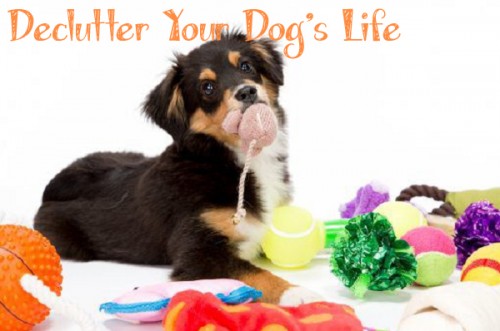
8 Clever Ways to Organize Your Dog’s Things:
Dog items with bonus space. Look for dog beds with a drawer underneath, pet steps with a lift-up step top, or elevated feeders with storage under the bowls. A dog Murphy bed saves floor space.
Double-duty furnishings. Assign toys to the space under an ottoman’s top, or keep dog towels in a bench with a lift-up seat.
Kitchen cabinets. Mount a spice rack under your over-counter cabinets to hold dog medications and supplements. Mount narrow shelves or hang an over-door shelf unit on the inside of cabinet doors.
Awkward spaces. Install a lazy Susan or pull-out storage unit to utilize cabinet corners.
Behind doors. Add a shoe organizer with pockets, a shelf unit, or rows of hooks. If you can’t install something on the door, use over-the-door hooks or organizers.
Underneath furniture. Hide gear in containers that fit under beds, sofas, and tables.
Walls. Hang wall pockets, or install shelves to host supplies in baskets. Use hooks or pegs for leashes.
Stored luggage. Between vacations, store out-of-season dog clothes and coats in suitcases.
“Look up, down, and think creatively,” Dansky adds.
Let’s talk toys. Among all of your dog’s things, toys can be the hardest to corral. If you leave them out they are likely to end up strewn across your floors, if you hide them away, your dog might not play with them at all. So how can you prevent dog toy clutter while still encouraging play?
6 Tips for Toy Clutter
Location, location, location. To find the right storage solution, first consider where your dog plays most, and look for storage options in that room. If your dog plays with Frisbee discs and balls outdoors, store those on the patio or covered deck for an immediate game of fetch.
Who, what, when. Then consider how your dog plays — does she play mostly alone or with you? What types of toys does she prefer, and how does she act with different kinds of toys? Does she need supervision with certain toys? Your answers will help you decide between using an open storage container with anytime dog access, or a closed or out-of-reach container so you control the toys she plays with.
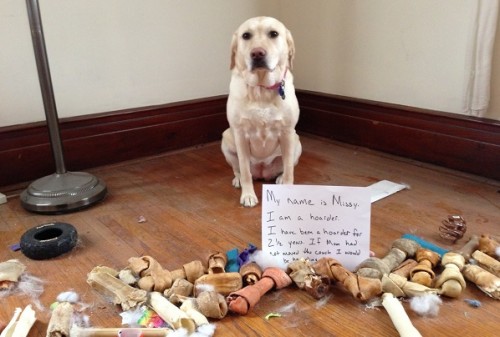
Decisions, decisions. To manage toys, you could provide your dog a choice among self-play toys like plush and squeaky toys, yet keep interactive-play toys like tug and tossing toys out of reach until you’re ready to play. You might reserve chew and treat toys for special occasions. Your storage will vary accordingly.
Rotate and remove. Your dog will accumulate more and more toys as time goes on, but likely will have a few favorites. He probably doesn’t need five balls and 10 squeaky toys. Store duplicate toys away and switch one or two of them out every few weeks to keep your dog interested and engaged. Remove old toys that have fallen apart or aren’t getting any attention and introduce other toys you’ve been storing away.
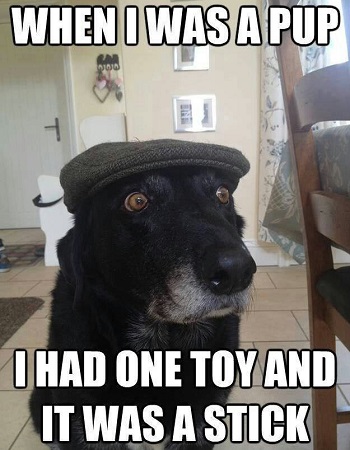
9 Things You Need to Know About Microchipping
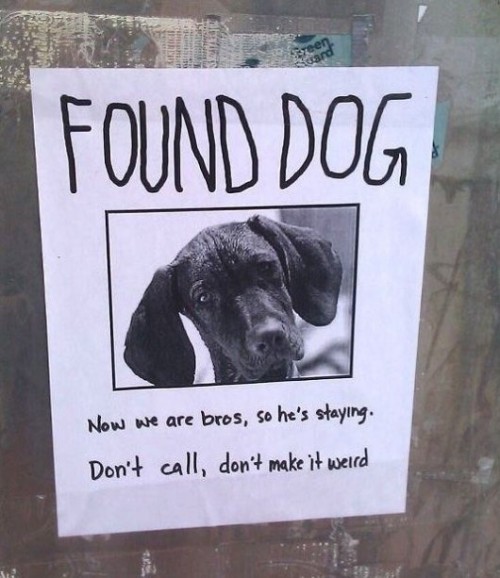
According to numbers from the ASPCA, approximately 36 percent of the 3.9 million dogs that enter animal care shelters in the United States enter as strays that were separated from their owners. That’s a lot of lost dogs!
Fortunately, technology exists to help you find your pet in the event that he ever becomes lost. Microchipping your dog, along with outfitting him with a collar and up-to-date ID tags, will go a very long way toward helping you reunite with your beloved pet.
Because microchipping is new to some people, and the technology hasn’t caught on everywhere, many people have questions when it comes to this topic. Here are some answers to the questions dog owners might have about microchipping.
1. What is a microchip?
A microchip is a small electronic chip enclosed in a glass cylinder — so tiny that it’s about the size of a grain of rice. The microchip is inserted under your dog’s skin via a hypodermic needle and is activated by a scanner that is passed over the microchip. Once it’s activated, the microchip emits a radio frequency and displays information that can help recover your dog in the event that he becomes lost, including a registration number and the phone number for the registry of the particular brand of microchip.
2. Will a microchip hurt my dog or get lost in his body?
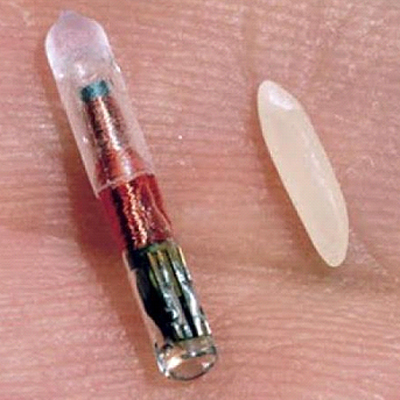
3. What kind of information does a microchip hold?
Microchips only contain identification numbers that are generated by the registry of the particular brand of chip.
4. Can a microchip replace a collar and ID tags?
No! Think of microchipping your dog as added protection. A collar and up-to-date ID tags are still a great bet for recovering your dog if your average person finds him wandering around, especially if that person doesn’t have access to or doesn’t know about microchips. Plus, like most technology, microchips aren’t foolproof. According to the HSUS, universal scanners can detect the presence of a microchip, but might not be able to read the information on it. And if an animal shelter volunteer or vet clinic staff doesn’t use the scanner properly, it might not detect the microchip.
5. Is there a central database that registers microchip information?
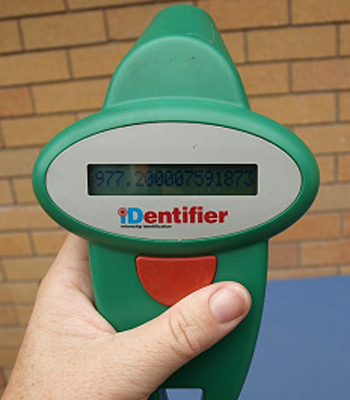
To help users find out microchip information more easily, the American Animal Hospital Association launched the Universal Pet Microchip Lookup Tool in 2009. entering the microchip ID into the search bar, users can find out which manufacturer is associated with the ID, and can then contact the manufacturer to find out owner information. According to the American Veterinary Medical Association, the likelihood that an pet can’t be identified from his microchip is very low.
6. What happens to the information on my dog’s microchip if I move?
If you change addresses, you must contact the company that registers your dog’s microchip and update your information.
7. Where can I get my dog microchipped?
Most veterinary clinics provide microchipping services. Some pet-supply stores and animal shelters also provide microchipping events.
8. Are there any health concerns associated with microchips?
Some news reports have linked microchips with cancer; however, the AVMA states that the chance of a pet developing cancer because of a microchip is “very, very low.”
9. Will a microchip really help to recover my dog if he gets lost?
Yes! According to the AVMA, a study of more than 7,700 stray animals at shelters showed that dogs with microchips were returned to their owners over 52 percent of the time; dogs without microchips were only returned to their owners 21 percent of the time. Of the dogs that weren’t returned, most of the time it was because the owner information in the registry database was incorrect, or the chip was never registered. So if your dog is microchipped, be sure to register his information, and keep it current!
14 Ways to Stay Popular at the Dog Beach
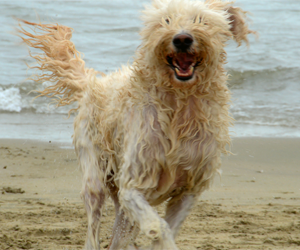
Forget Food. Do not bring your lunch — or any food at all — to a dog beach. You will be swarmed by dogs and probably lose your sandwich. Dogs can be worse than ants at a picnic.
Laugh. Do bring your sense of humor. You might get peed on or step in a pile of poo. Consider it good luck and move on.
Be realistic. If your dog is shy, don’t expect other dogs to respect that. Dogs will be dogs.
Don’t leave luck to your lady. Do not bring a female dog in heat to the beach unless you want trouble and puppies.
Walk like a man. If your male dog is not neutered, watch him closely — other dogs may want to challenge him.
Anger management. Do not bring an aggressive dog to the beach. If your dog gets into a scuffle, leave the beach immediately.
Poop patrol. Pick up after your dog, and nicely let other owners know if their dog has left a “present” on the beach.
Be prepared. Bring extra poop bags and towels, plenty of water, and a canine first-aid kit.
Adults only. Avoid bringing children to a dog beach, as they may be knocked over, scared, or injured.
Baywatch. Not just a great show from the 90s, but a practical activity too! Watch your dog at all times. This is not soggy-doggie daycare.
Sharing is caring. Don’t bring a toy to a dog beach unless you’re OK with other dogs playing with it and possibly losing it.
Bring your shades. Provide your dog with shade and lots of water on hot days.
Stay cool. If the sand burns your feet, it’s burning your dog’s paws, too. Run to the shore or carry your pooch.
Cover up. We aren’t talking about your clothes (although we do recommend staying more covered up then you would at the human beach.) Sunscreen for dogs? Yes! Apply sunscreen made specifically for dogs to their noses and ears. Rinse your dog off with fresh water after a day at the beach. Repeat!
Dog-Friendly Vacations That Will Make You Feel Like an Excellent Person
Earth Day might have you thinking how you can make a difference. While it’s always good to fit being green into your daily routine, have you ever considered a green vacation? Most people look at vacations as a way to escape their day-to-day and indulge, but what if there was a way to relax and give back all at the same time?
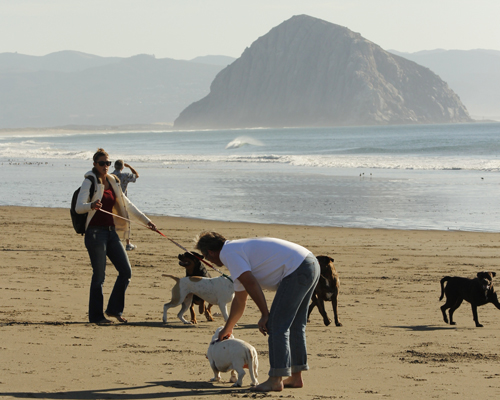
“Stewardship Travel offers visitors a lighter touch than a high intensity volunteer vacation,” explains Stewardship Travel Director and Diane Strachan. “For instance, WineCoastCountry’s Stewardship Travelers can pair a luxury spa visit with a brief dog friendly beach clean-up, followed by wine tasting from a Stewardship Traveler vintner that invites dogs, fine dining (without your dog) and a donation to the Pacific Wildlife Care Foundation.”
This mix means you can pamper yourself, your dog, and mother Earth at the same time – what could be better?

Each offers activities where dogs are invited to join their owner in demonstrating their philanthropic side:
Avila Beach and Valley – Stewardship Traveler dogs (especially retrievers!) and their owners can visit Avila Beach and pick up a Stewardship Beach Cleanup Kit at participating lodging properties to look for flotsam, jetsam, and plastic litter harmful to wildlife (best to explore the beach after storms). Avila has a special dog run beach north of town. Dogs are also welcome on the public beach before 10 a.m. and after 5 p.m.
Cayucos – Stewardship Traveler Dogs may accompany Stewardship Traveler owners on the dog friendly beach in Cayucos and help pick up the poop left behind my not so caring dog owners. Often times good intentioned people forget their green bagged dog poop on the beach. Poop bags are to be found at almost every beach access point in Cayucos.
Lopez Lake Recreation Area – Leashed pooches can join their guardians at one of the top choices for camping and leisure trips featuring 22 miles of shoreline, there’s something for everyone: camping, fishing, boating, skiing, sailing, windsurfing, picnicking, hiking, equestrian trails, mountain biking, canoeing, bird watching, hanging out with your dog, and so much more. Dogs cannot swim in the lake but can take the natural history boat cruise.
Pismo State Beach – From late October to February, leashed dogs and their guardians can marvel as thousands of black and gold Monarch butterflies cluster in the limbs of a Eucalyptus grove at Pismo State Beach, providing an amazing glimpse of nature in all her vibrant glory. This colony, easily accessible from Highway 1, is one of the largest in the nation, hosting an average of 50,000 butterflies every year.
San Luis Obispo Botanical Garden – Leashed canines are invited to the Botanical Gardens (although not during activities or events.) Featuring the diverse plant life of the Mediterranean climate zones of the world, this Botanical Garden provides opportunities for education, recreation, conservation and research. Through special programs and facilities, the Garden fosters an appreciation and understanding of the relationship between people and nature, and encourages a sense of stewardship toward the environment.





